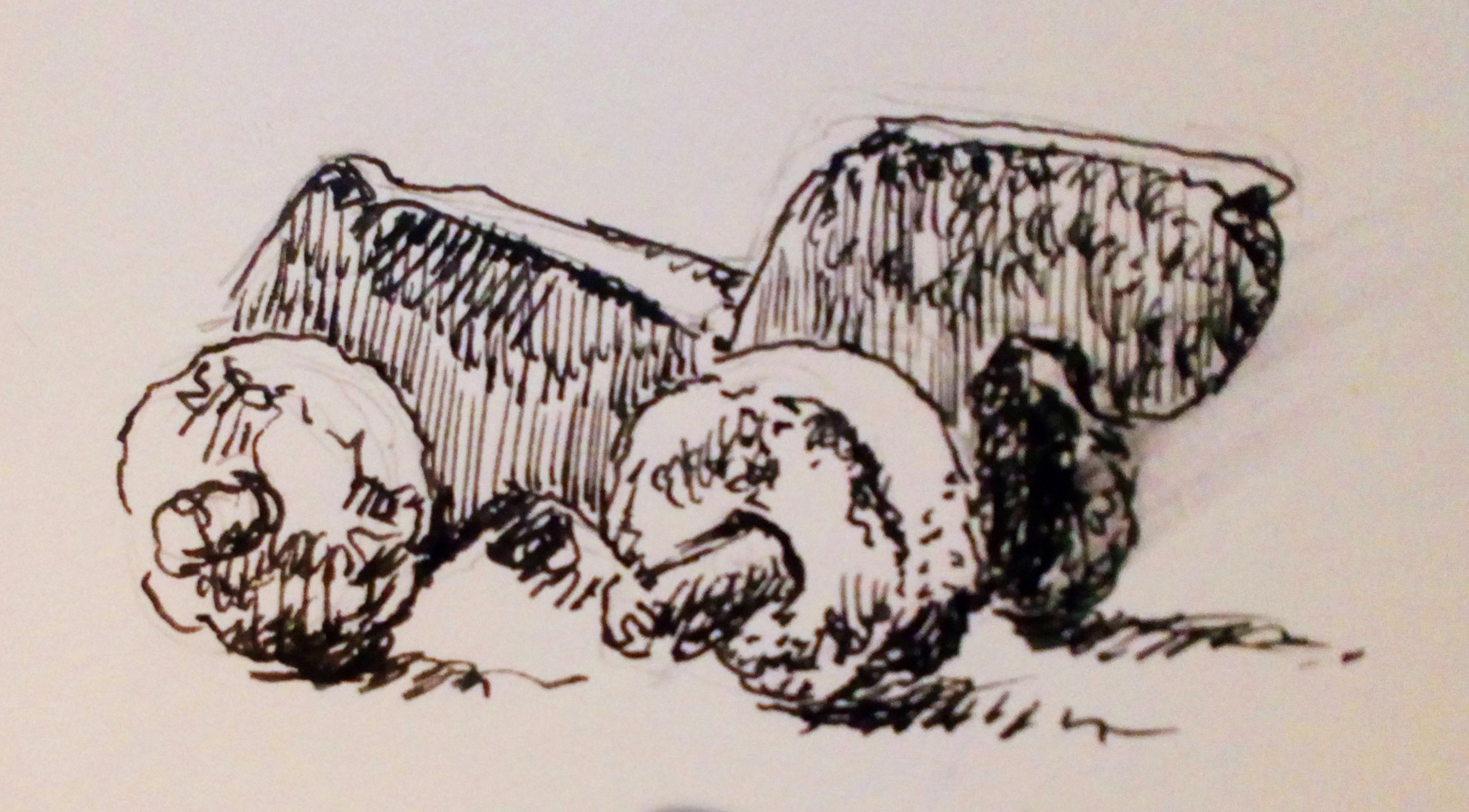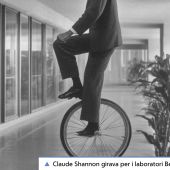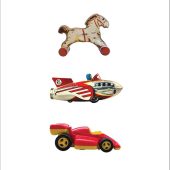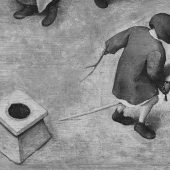Attention to toys as technical objects troubles the prevailing notion of technological development as driven by the identification and satisfaction of material, practical and instrumental needs for human society and economy. Toys are technical, machinic, operational, they often have moving parts, i.e. they are machines in their own right, and even non-articulated toys have their operationality entwined with their physical characteristics. The cuddly toy with soft surface and pliable substrate, the toy soldier that makes sense only as one of a collective, arrange and deploy in a ludic strategy. Toys are used to do things, but not for immediate practical ends. They are symbolic, communicative objects, like paintings and ornaments, and play with toys has an abstract formalism and intensity that is redolent of ritual. But they are also handled, placed, animated and combined in the imaginative and voluptuous ‘work’ of children’s play. Both modern and archaic toys are often little machines in their own right, manipulable, with moving parts. The human production of non-instrumental artefacts and tools appear to have emerged alongside one another. Animal play and object use is manifested in both instrumental tool use and play – chimps use sticks to prise termites out of tree bark but also as dolls to be carried carefully and laid down to ‘sleep’. So, again, what if technology were always already playful, fundamentally toyetic? For this thought experiment to be sustained, evidence and interpretation is needed of the playful dimensions of technics as both archaic and immanent, evidence of a lusory attitude in the creation of devices or a demonstrable flexibility and latitude in the uses to which devices might be put – from the Palaeolithic to the Informational.
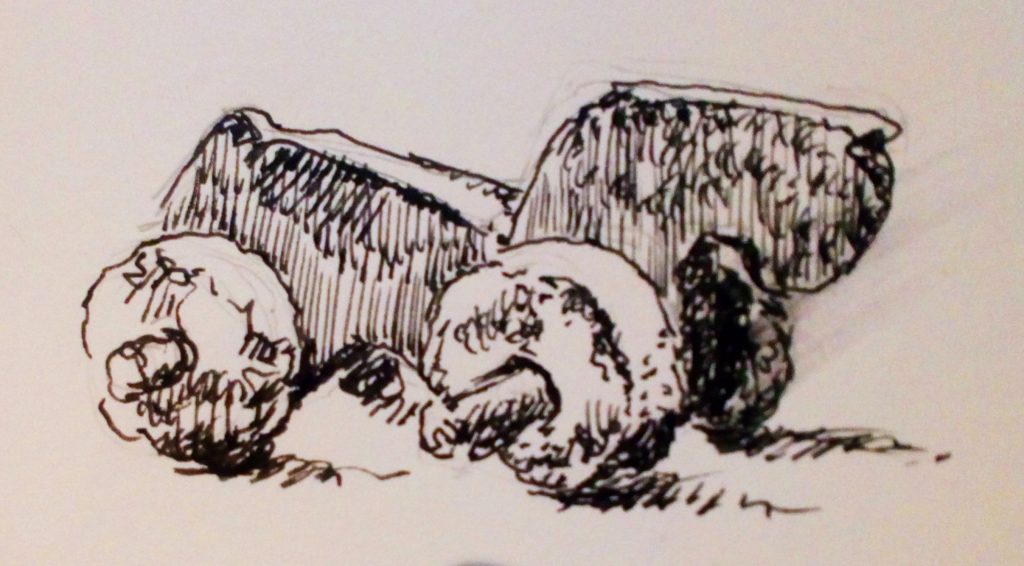
Take pre-Columbian Mexican wheeled toys as a compelling example of the decoupling of mechanical invention from instrumental application. The invention of the wheel falls in the middle of a vernacular triumvirate of archetypal technological innovation: right in the middle between the primeval mastery of fire (often taken to mark a technical and evolutionary distinction between the animal and the human) and that of sliced bread (the sardonic marking of the late modern era of technically-driven convenience). Yet these small pottery or wood figures of animals with their non-natural appearance and mode of movement reverse the conventional timeline of invention: that machines manufactured for pressing material needs are subsequently modelled and scaled down by an indulgent adult for children’s play. In the case the wheeled machine is created not to address efficiencies of energy and labour in the transportation of materials (wheels would not work in the mountainous or sandy environments of Mexico and Egypt) – but by the playful possibilities of a mechanical device built to the scale of child’s hands and the sweep of child’s arms as the animal is animated in its frictionless articulation with its immediate environment. At the very least in Mexico and Egypt the invention of the wheel was, before anything else, an invention for symbolic, embodied, imaginative and ‘useless’ activity. The mechanical aspects of these toys challenge dominant notions of aesthetics and symbolism too: they clearly cannot denote actual animal bodies and locomotion, and nor are these wheels abstraction, ornament or stylisation in the ways that pre-industrial non-naturalistic art is generally interpreted. Here aesthetics follows non-instrumental function, and a sort-of animal looks back not to any natural model but trundles forwards into a ludic future, fabulous and fabulated.
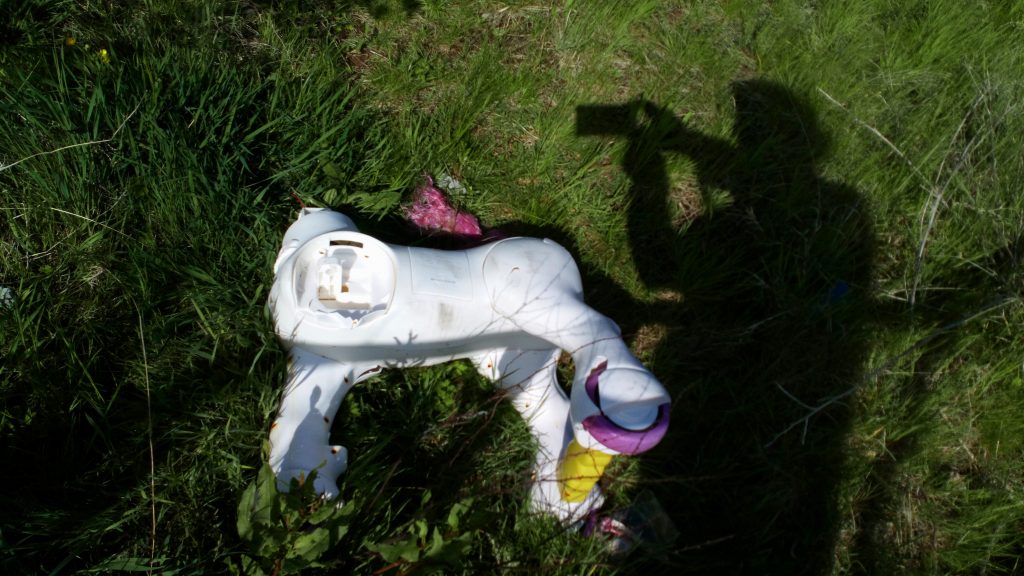
[from draft of Toy Theory]
